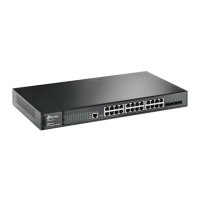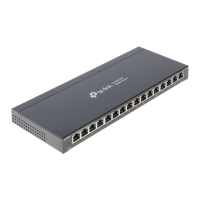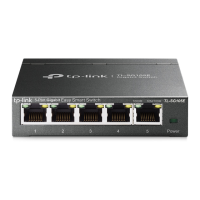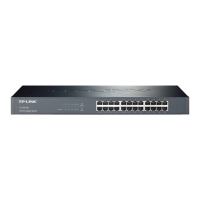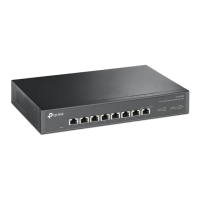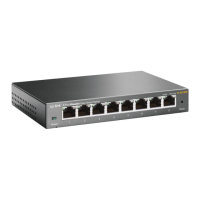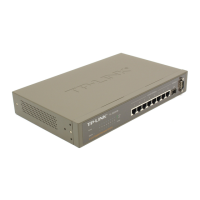Configuring Spanning Tree STP/RSTP Configurations
User Guide
395
Max Hops Specify the maximum BPDU counts that can be forwarded in a MST region.
The default value is 20. A switch receives BPDU, then decrements the hop
count by one and generates BPDUs with the new value. When the hop
reaches zero, the switch will discard the BPDU. This value can control the
scale of the spanning tree in the MST region.
Note:
Max Hops is a parameter configured in MSTP. You need not configure
it if the spanning tree mode is STP/RSTP.
Note:
To prevent frequent network flapping, make sure that Hello Time, Forward Delay, and Max Age
conform to the following formulas:
•
2*(Hello Time + 1) <= Max Age
•
2*(Forward Delay - 1) >= Max Age
2) In the Global Config section, enable spanning tree function, choose the STP mode as
STP/RSTP, and click Apply.
Spanning Tree Check the box to enable the spanning tree function globally.
Mode Select the desired spanning tree mode as STP/RSTP on the switch. By default, it’s
STP.
STP: Specify the spanning tree mode as STP.
RSTP: Specify the spanning tree mode as RSTP.
MSTP: Specify the spanning tree mode as MSTP.
2.1.3 Verifying the STP/RSTP Configurations
Verify the STP/RSTP information of your switch after all the configurations are finished.
Choose the menu L2 FEATURES > Spanning Tree > STP Config > STP Summary to load
the following page.
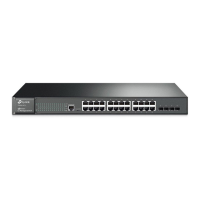
